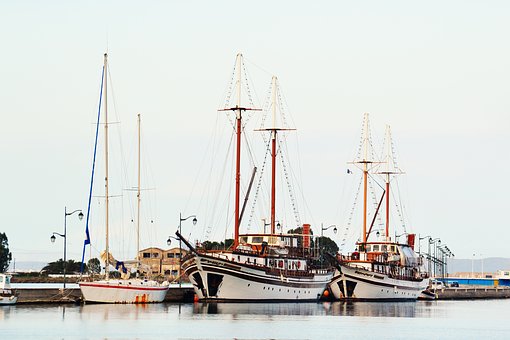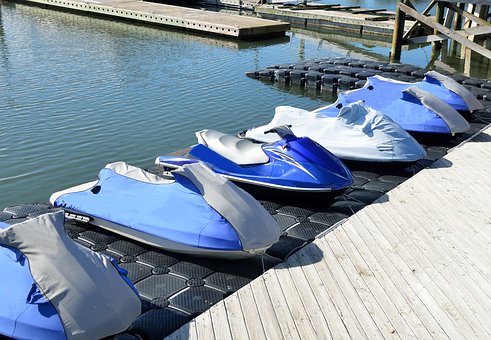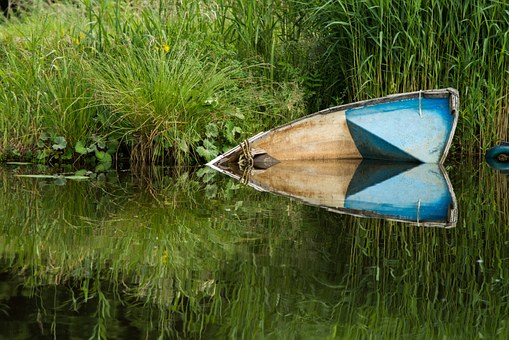Fire On Boats

Fire is not something to be messed with
Fire is not something to be messed with. If you own a boat it is important that you know exactly what to do in the event of a fire.Four things are needed for combustion:-
Fuel - to vaporise and burn.
Oxygen - to combine with the fuel vapour.

Heat - to raise the vapour to its ignition point.
Chain reaction - the chemical reaction between the three.
If any of these are removed, there will be no fire.
Be Prepared
Fit smoke, gas and carbon monoxide alarms and test them regularly.
Consider fitting an automatic extinguishing system in the engine compartment, or at least make sure there is a fire-fighting hole with a cover and a powder extinguisher with a hose nearby.
Service fire extinguishers regularly.
Make sure everyone on board is aware of the location of all fire extinguishers and fire blankets and knows how to use them.
Make sure everyone is aware of the various categories of fire and how they should be treated differently.
Prevention
Never leave any flame or very hot item unattended.
Make sure matches are extinguished before disposing of them in waste bins.
Beware of gas lights which may still burn with a very low flame when turned off.
Make regular checks of all your systems, fuel, engine, electrical and gas.
Make sure you can cut off fuel and gas supplies from the cockpit.
Turn off at the gas bottle and let burners on the stove die before turning off the knobs.
Check all burners are off before turning one on to light the stove.
Keep gas bottles in the cockpit locker which vents overboard.
Put a crew member in charge of the cooker when it is on, keeping a close eye on it and checking at regular intervals.
Keep fuel tanks tied on the deck.
Empty all fuel out of the outboard before storing it on the cockpit rail.
Make sure that you have your CO detector on.
Any oily cloths should be discarded after use or kept on deck or in the cockpit until they can be disposed of.
Run the blower in the engine room after any gas is exhausted from the stove by mistake.
Close hatches on the windward side of the boat when refuelling.
No smoking on board.
Regularly inspect wiring.
If you are charging batteries beware of them off-gassing i.e. producing hydrogen gas. This usually happens through overcharging or a short circuit. Make sure you are in a well ventilated area.
Extinguishers (these are colour coded) There can be confusion, so make sure you read the instructions before you buy and use these, to make sure you are using the right one for the right fire.
Water (red) - puts the fire out by neutralising the heat but it has restricted use, so a bucket over the side is probably as effective and certainly cheaper. Use for class A fires.
Dry Chemical (blue) - fast and effective, coating the flames and denying them oxygen, but not cooling the fire. It is the most multipurpose extinguisher. Use for class A,B and C fires
Dry Powder - should only be used on metal fires. These extinguishers are often confused with Dry Chemical extinguishers which have more uses. Use for class D fires.
Foam (cream) - forms an airtight cover which kills the flames and seals in the vapours. They can be used from a distance. Use for class A and B fires.
Carbon Dioxide (CO2) (black) - prevents oxygen getting to the fire, but should not be used from too close as this could spread the flames. It should not be used in a confined space due its suffocating danger. A suffocated fire-fighter is no use to anyone. Use for class B and electrical fires.
Vaporising Liquids (green) - used on flammable liquids and live electrical equipment, class B and E fires.
Wet Chemical (yellow) - can be used on paper, fabric, wood and cooking oil. Use for class A and F fires.
Halon - banned in 2003, but the replacement FM200 can be used in confined spaces such as engine rooms. It chemically reduces heat but does not displace oxygen. There are hand held extinguishers in the USA but not in the UK.
Fire blanket - generally kept in galley for use on cooking stove fires.
Types of Fire (These are the UK & European classifications. The USA ones differ slightly, so be warned and read the instructions carefully)
Class A - fires of combustible solids such as wood, paper, plastic and fabric. These are best put out by water (although foam and certain dry chemicals can be used).
Class B - fires caused by flammable liquids such as diesel, petrol, white spirit, oil, grease. These give off flammable vapours and require smothering agents. Foam, dry chemical and carbon dioxide (CO2) extinguishers can be used. If the fire is being supplied with fuel, this should be shut down first.
Class C - fires caused by gas such as propane or butane. A dry chemical extinguisher is the one to use, coating the fuel but not cooling the blaze so re-ignition is a danger if the fire is disturbed. Again it is important to shut down the sources, which create an explosive hazard.
Class D - fires caused by combustible metals such as sodium, magnesium, potassium and their alloys. Dry powder should be used on these, which smothers and controls them.
Class E - (although not officially classified in the UK, these are sometimes referred to as Class E) - fires involving electrical equipment. CO2, Halon and dry chemical extinguishers can be used as these have non-conducting agents. Always try to remove the source of electricity, the chance of shock and the source of ignition.
Class F - fires involving fat. Use a fire blanket, foam, wet chemical, or CO2. Remember to hold the fire blanket between you and the fire and don't pick up the container to move it. Great care should be taken when spraying a fat fire to prevent the burning fat blowing about.
What do you do?
Sound a general alarm (you should have warned your crew in your briefing what this is and what it means).
Inform the captain of the fire's location and size.
Make sure everyone on board is in a safe place.
Determine the type of fire and what sort of extinguisher to use.
Activate emergency fire-fighting equipment.
Restrict the fire, shutting off air, electrical systems and fuel supply.
Manoeuvre the vessel to minimise the effect of wind on the fire (head into the wind).
Send a Mayday (you can always cancel it later). Try to put out the fire first before using valuable time trying to send a Mayday.
Be prepared to abandon the vessel if unable to control the fire or if there is risk of an explosion. Definitely send a Mayday now.
If time permits grab life jackets, grab bag and life raft.
If there is the slightest risk of explosion - take to the life raft.

Afterwards Any areas which have had the fire smothered will need to be cooled by water. Don't disturb a fire for at least 10 minutes after it's been extinguished to ensure there is no re-ignition. Don't worry about the mess. Fire and smoke can kill you, but a messy boat can be cleaned up.
Prevention is better than cure - and - be prepared.
It is impossible to guard against all eventualities, but a regular maintenance schedule for your boat, and good thorough crew briefings whenever you are on board, will ensure that you have a fighting chance if you do have a fire on board. And if the worst happens, don't panic, think it through and remember that your life is more important than the boat.
by: Simon White The Favorable Approach To Pick Boat Truck Tires Plus Trailer Wheels The Boat Accessory That Respects Space How Fenders Are Important For Huge Boats Boat And Its Accessories Huntington Beach Water Front Homes With Private Boat Docks Boat Blueprints: Why You Need Them? Importance Of Installing Gas Detectors In The Boats Incredibly Unique Sailboat Trailer By Loadmaster Trailer Ms Royal Lily Boat Is 5 Star Deluxe To Enjoy Nile Cruise From Luxor To Aswan Nile Cruise From Luxor To Aswan With Ms Royal Lily Boat Ms Royal Lily Boat Give Best Deal 5 Days Cruise From Luxor To Aswan Luxor Nile Cruise With Ms Royal Lotus Boat For The Best Holidays A Guide To Renting A Houseboat